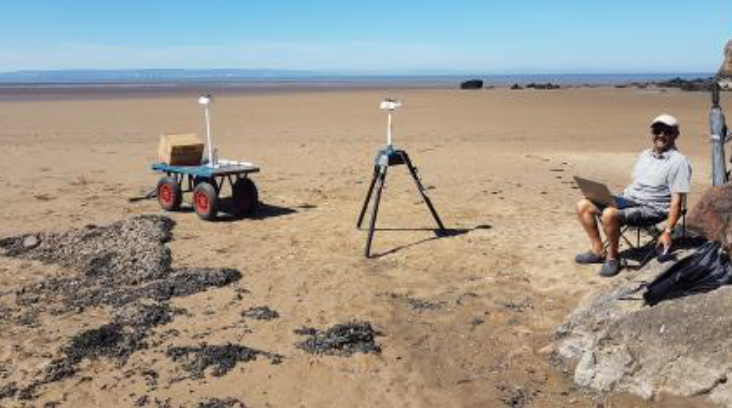
The BL654’s Big Day Out
Brean Down is a peninsula that projects into the Bristol Channel, about 2 km or 1.5 miles in length, and where it connects to mainland is the beginning of Brean Beach, which extends for 7 km north to south. This is where our experiment began.
Conditions were dry and warm, full sun, with a temperature maximum of 29°C and relative humidity no greater than 66%.
The goal was to connect two BL654 development kits, and then slowly draw them apart, adjusting conditions when signal dropped to sustain the longest possible connection. The hardware required, therefore, were two BL654 development kits (part number 455-00001), a tripod for the stationary development board, and a tripod on a trolley for the moving board. The tripods would be 1.25 meters above the ground for the first test, and 2.5 meters above the ground for the second test. Both boards ran the Nordic Long Range demo application, available here from Nordic’s Github page and described in their blog post on the subject.
The full details of the test, plus more photographs and detailed results, can be found in our BL654 range testing application note.
Key Takeaways - Achieving Long Range for Bluetooth
Again, it’s worth noting that this test setup is completely unlike most Bluetooth LE applications in practice. You’ll rarely be able to rely on devices with direct line of site, with little interference nearby, and your devices will rarely have their antennas pointed directly at each other, as well.
But with all of that said, we were able to achieve a link as far out as 1.9 km (1.18 miles) between the two devices. This is after optimizing for a few factors, which included:
- Devices at 2.5 meters above ground achieved a better range than at 1.25 meters
- Devices communicating at 125 kbps with coded PHY achieved better range than at 1 mbps without coded PHY.
In fact, Coded PHY had practically a doubling effect at increasing range. Increasing the height of the tripods by double ALSO doubled the connection range.
 Laird Connectivity is now Ezurio
Laird Connectivity is now Ezurio